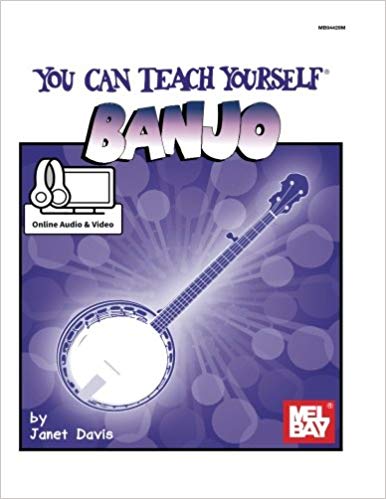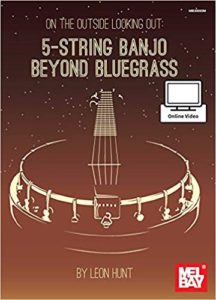Genre
Most instruments are suited for a specific genre, and the banjo is no exception. Most banjo players play a style of music called bluegrass, a unique combination of country, jazz, and old time music. I myself have been playing this style of music since 2012, and it has quickly become my favourite genre of music.
In addition, bluegrass music is also well-suited for those new to the banjo due to its simpler style and melodies. While much of the music I teach is bluegrass, I am quite willing to explore other genres of music with students if that is the direction they wish to go.
Material
As noted on my “Rates and Policies” page, I supply the student with any music books needed, which the parent or guardian can pay for once received.
Below is the list of books which I use in teaching students:
You Can Teach Yourself Banjo

The first book my students learn from is “You Can Teach Yourself Banjo” by Janet Davis. This book is a perfect introduction to the banjo, complete with instruction on how to hold the banjo, playing basic rolls, and learning easy bluegrass songs. The book also comes with a link to online audio and video recordings of all the lessons, so that the student can listen at home.
The Ultimate Banjo Songbook

Once my students have completed the first book, they can then move on to a more intermediate book: “The Ultimate Banjo Songbook: 26 Favorites Arranged for 5-String Banjo“, also by Janet Davis. This book provides the student with more advanced arrangements from a wide variety of genres. Each song comes with large selection of lick variations, which will expand the student’s repertoire and prepare them for creating licks of their own. This book also comes with online audio recordings.
At this point in my curriculum, the student can decide whether they would like to receive more specific training in the bluegrass genre, or whether they would like to explore other musical styles.
Earl Scruggs and the 5-String Banjo

To hone their bluegrass banjo skills, I would suggest “Earl Scruggs and the 5-String Banjo” by Earl Scruggs. This book provides a large collection of bluegrass classics played by the father of bluegrass music himself, and comes with online audio recordings. With this book the student will develop a great understanding of the bluegrass style and be able to go forward confident into the world of bluegrass music.
5-String Banjo Beyond Bluegrass

If the student would prefer styles other than bluegrass, I would suggest an interesting and challenging book by Leon Hunt: “On the Outside Looking Out: 5-String Banjo Beyond Bluegrass“. This book presents a great selection of non-bluegrass tunes which will stretch the students skills through more complex pieces. Online video recordings of the lessons are included.
Theory
Unlike other instruments and genres of music, the banjo does not require an in-depth knowledge of music theory. However, a basic knowledge of chord progressions, scales, timing, etc. is essential to any student’s education.
The way I teach theory follows a “learn-as-you-go” philosophy. This way, banjo lessons stay fun and exciting, because the student learns how to play while learning the theory behind it at the same time.
Also unique to banjo is the form of notation used in reading and writing music. Banjo music uses a shorthand notation called tablature. In tablature, each line on the staff stands for a string, and the number written on that line indicates which fret to play. All of my teaching materials are transcribed as tablature, so theory pertaining to musical notation will not be covered in much depth.
